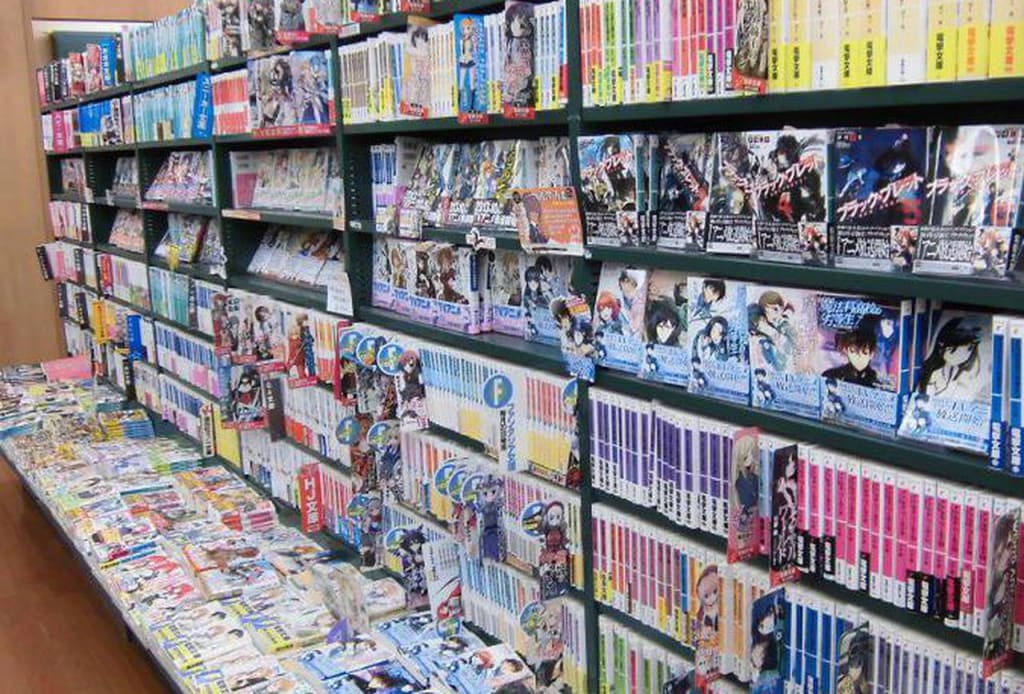Light Novels
What are they and how can I get them?

Light novels, novels that are light; done, end of definition, thanks for reading…
Well not quite. The term “light novel” is used in Japan to loosely describe a subgroup of literature that can be compared, to what in the United States would call a “young adult” (YA) novel; each targeting an audience of young people in middle school and up. The light novels of Japan, however, differ from what is considered a typical YA novel or book that are found outside of Japan.
Dissecting the name, “light” in the name stands for the type of language and structure used in the novels. The diction and short paragraphs in light novels are easier to read, making completely reading these novels fast. Modern light novels use easy to read kanji, which is more suited for the age demographic (13 to 19 year olds) that the authors want to reach than older Japanese works containing older diction and kanji that is hardly used. This is similar to the divide in North America between the YA and children’s books to those found in the regular fiction or literature sections of libraries and bookstores. The “novel” half of the title is what it is. Light novels are still novels with the word count in the range of 50,000 words over the course of 200 pages or so. They take on storytelling as if it were a book in the States, except for a few details. Light novels are almost solely exclusive to Japan and Japanese artists with few exceptions, keeping the story told entirely in Japanese to the discouragement to non-speakers.
What makes light novels different from their North American counterparts is that there are illustrations with the text that mirror the same art styles seen in manga and anime, as such light novels are as confused as them. The light novel has its text in a novel format with easy to read paragraphs than that of a manga which focuses a lot on the artwork to drive the story forward. The confusion stems from the popularity of each of those three mediums. With the popularity growing for the anime styles, Japanese pulp magazines adopted the act of placing pictures on their covers, and before and after the stories, until modern times in which light novels became more integrated with the visual components that manga and anime thrive on. Light novels, if popular enough, can be adapted into an anime or manga and vice versa.
What keeps light novels out of the limelight in the West that manga and anime are exposed to is the amount of translation that would have to go into a light novel than having to for a manga with fewer words and an anime that is adapted to be later translated. The popularity of the manga and anime in the West has lead mainly to light novels being created base of them, but then unable to promote newly created light novel to the West. But that’s not to say all light novels don’t get translated. Some light novels that have been translated have become popular in the West, stimulating the possibility of more light novels appearing in the West.
The cost for light novels are also inexpensive. A light novel ranges around 400 to 600 yen or around $3 to $5. With anime and manga, prices in the States for them are already on the not cheap side per individual show or manga book. I don’t see light novels facing much of pricing backlash as those interested in light novels, probably have an inkling of the jacked up price of one based on the international distance taxes of other goods, and some from what it takes to buy manga, anime and other Japanese goods in the States.
Hopefully, with the trend to appeal to older audiences in Japan, light novels will get the attention it needs to cross the language barriers for those that have a hard time picking up Japanese as a second language. As someone who loves to read YA books, I would find it pretty wonderful to be congratulated with my reading with pictures of the story I’m readying. Having artwork that is made to go along with the story would give more to the experience to reading. The use of pictures though normally used for those that are learning to read in the States in young children’s books would give back a depth of the story to those reading pages of just words. I would love to experience the artwork that I love in manga paired with a more extensive story format that I get with regular books. It looks like for now though I will have to be satisfied with online translations and scans of translated light novels.
About the Creator
Mady Evans
Just trying to write to get better at writing






Comments
There are no comments for this story
Be the first to respond and start the conversation.